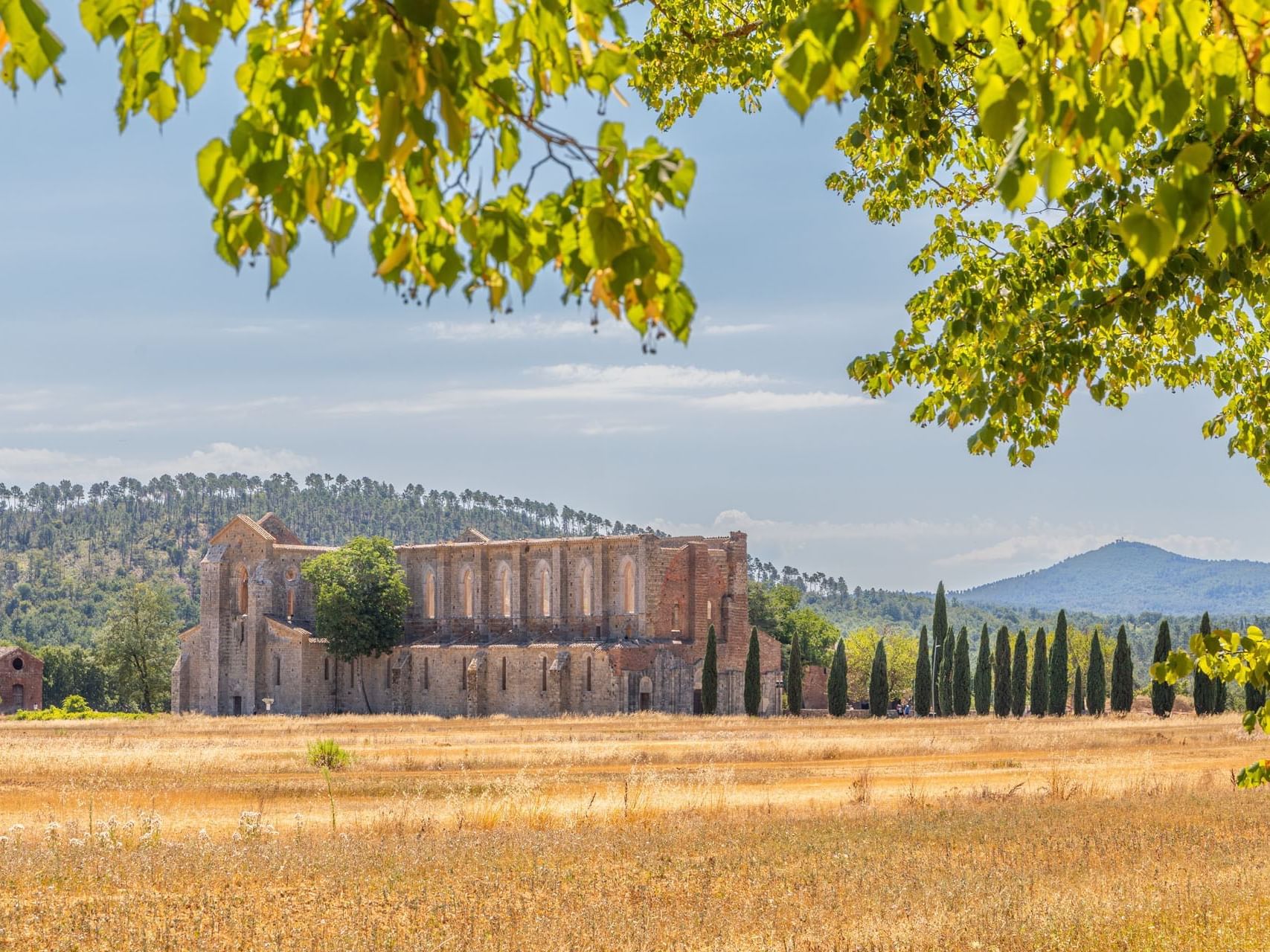Val di merse route
ROUTE FROM SIENA TO VAL DI MERSE (half a day/ 1 day)
The Val di Merse is one of the less exploited parts of the province of Siena. It is still mostly covered in woods and offers a lot of possibilities for walking tours and other naturalistic itineraries.
Turn into the freeway to Siena and continue towards Florence exiting at Siena Sud. At the exit turn to the right to Rome and follow the signs to Rome/ Monteroni. Along the road you can see the Grancia di Cuna on the right-hand side, an ancient, fortified farm belonging to Santa Maria della Scala. Passing through the village of Monteroni, you continue towards the fortified village of Lucignano d’Arbia where the gates and a part of the Sienese walls are still visible.
From Lucignano you proceed to Murlo, a mediaeval settlement in a zone which was an important Etruscan centre. Here you can visit the Antiquarium di Poggio Civitate housed in the former bishop’s palace on Piazza della Cattedrale. Some of the most interesting archaeological finds are the reconstruction of the terracotta decoration of an Etruscan palace dating from the 7th century BC and the statue of the man with the “big hat”.
Continuing towards the Siena-Grosseto freeway, you turn to Siena and exit at Orgia/ Torri going towards Rosia. On your way you can stop at Torri, a mediaeval village where you can visit St Mustiola’s abbey in Romanesque-gothic style and its cloister (open only on Monday morning and Friday morning). When you arrive in Rosia, you turn to the right to Follonica/ Roccastrada. After the village you will see the Ponte della Pia (Pia’s bridge) which lay on the Massetana road connecting Siena and the Maremma. According to the tradition, Pia de’ Tolomei, Nello d’Inghiramo de’ Pannocchieschi’s repudiate wife, would pass on this very bridge on her way to the Castello della Pietra where she was exiled and finally died. Pia is mentioned by Dante in the Divine Comedy (Purgatory V): “Ah! When thou shalt have returned unto the world, and rested from the long journey, ' the third spirit followed on the second,’ be mindful of me, who am Pia. Siena made me, Maremma unmade me; he knows it who with his gem ringed me, betrothed before”. Continuing this road, you pass the castle of Frosini, once property of the counts della Gherardesca, you turn to Follonica/ Massa Marittima.
After few kilometres you will the majestic ruins of San Galgano’s abbey. The church was built in the 12th century by French Cistercian monks. It represents one of the most important examples of Cistercian-gothic style in Italy. A small path to the left of the abbey leads to the small church of Montesiepi. It was in this place that the nobleman Galgano Guidotti thrust his sword in the rock beginning his life as a hermit. However, this experience lasted one year only as he died on December 3rd, 1181. In the attached chapel there are frescoes by Ambrogio Lorenzetti. It is curious that the image of the Blessed Virgin with the infant Jesus has tree arms. Originally the Madonna did not have the child on her laps, but a sceptre in the one hand and a globe in the other.
Coming back to Siena it is possible to make a detour via Sovicille, follow the SP 52 towards Ancaiano and then continue to the Cetinale where you can make an interesting walking tour. It was Cardinal Flavio Chigi, pope Alexander VII’s nephew, who decided to have this villa built at the end of the 17th century. Between 1698 and 1705 the Parco della Tebaide and its statues were built. Il Romitorio is in a higher position than the villa and can be reached going up a path bordering the so-called Scala Santa (holy stairs – unfortunately, it is impossible to go up the stairs because of the loose steps. Owing to its commanding position, you will enjoy a wonderful view of the surrounding area. From the Romitorio a path in the woods leads to the Romanesque Pieve di S. Giovanni Battista a Pernina.
